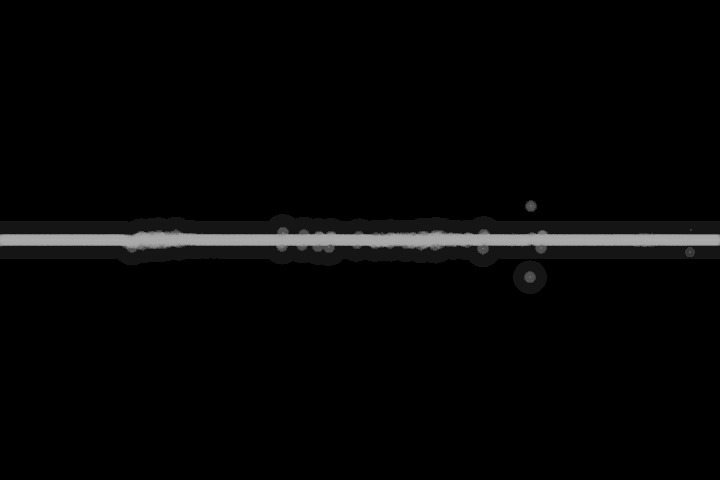Last one!
Today I played with spectral flux to change the size of particles across the screen. For each frame of audio a particle is moved from the middle screen. I was surprised how easy spectral flux was and how great it could look.


import javax.media.opengl.*;
import processing.opengl.*;
import ddf.minim.*;
import ddf.minim.analysis.*;
Minim minim;
AudioInput in;
FFT fft;
float[] x;
float[] y;
int index;
float[] spectrum;
float[] lastspectrum;
void setup()
{
size(720, 480, OPENGL);
hint(DISABLE_OPENGL_2X_SMOOTH);
background ( 0 ) ;
smooth();
noStroke();
x = new float[width];
y = new float[width];
for (int i = 0; i < x.length ; i++)
x[i] = (float)i ;
minim = new Minim(this);
in = minim.getLineIn(Minim.STEREO, 512);
fft = new FFT(in.bufferSize(), in.sampleRate());
fft.noAverages();
spectrum = new float[fft.specSize()];
lastspectrum = new float[fft.specSize()];
Arrays.fill( lastspectrum, 0 );
}
void draw()
{
fft.forward(in.mix);
///------------------------
// SPECTRAL FLUX
///------------------------
float flux = 0;
for( int i = 0 ; i < fft.specSize() ; i++)
{
spectrum[i] = fft.getBand(i);
flux += spectrum[i] - lastspectrum[i];
// rectified flux
// float fluxval = spectrum[i] - lastspectrum[i];
// flux += (fluxval > 0.0 ) ? fluxval : 0.0;
}
System.arraycopy( spectrum, 0, lastspectrum, 0, spectrum.length );
///------------------------
fill(0,6);
rect ( 0,0, width, height );
fill(200,60);
translate(0,height/2);
for ( int i = 0 ; i < x.length ; i++)
ellipse(x[i],y[i],abs(flux),abs(flux));
y[index++%width] = flux;
}
void stop()
{
in.close();
minim.stop();
super.stop();
}
void mouseClicked()
{
saveFrame();
}



